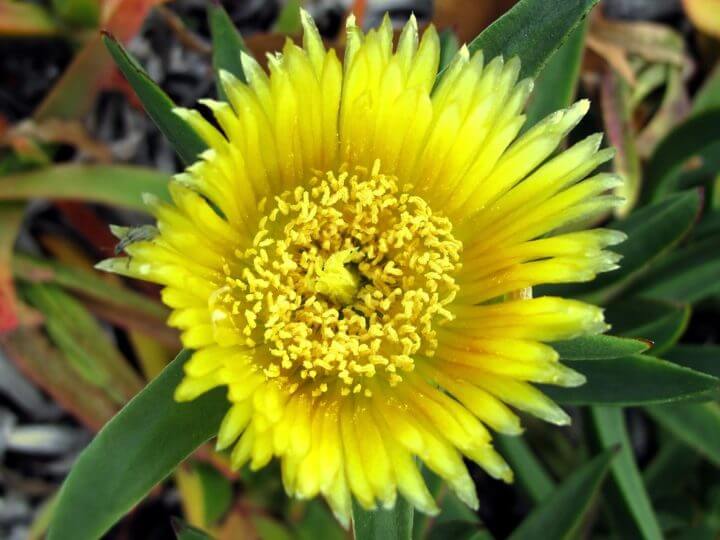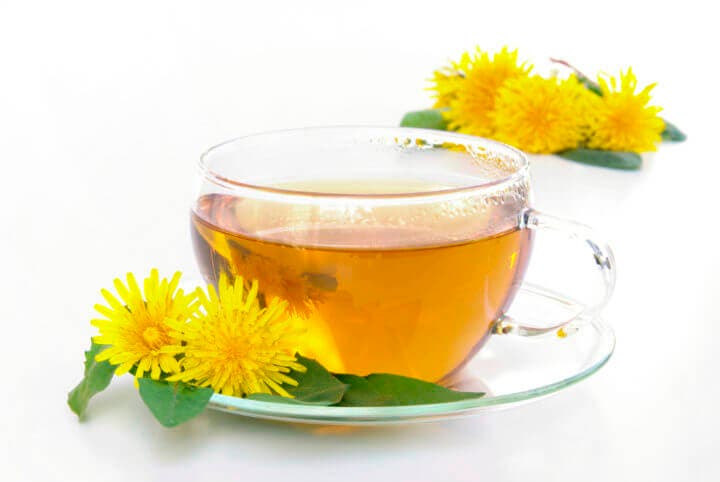Tussilago farfara is a plant that has been cultivated for many years in order to take advantage of its medicinal properties. It is commonly found in herbal preparations that are used to treat a variety of problems, such as sore throats and respiratory infections. However, despite having different medicinal benefits, it also has a series of disadvantages that can cause certain health problems.
Find out more about the benefits and side effects of Tussilago with the help of this guide.

What is Tusilago?
The Tussilago fArfara is a flower known to be from the daisy family. It is related to chrysanthemums, marigolds, and sunflowers. It is a species native to Europe and parts of Asia, and is similar in appearance to dandelions, thanks to its yellow flower heads.
The Tussilago typically grows in large colonies of several dozen plants. Its sprouts are sometimes added to infusions, syrups and tinctures.
In herbal medicine it is used to treat illnesses such as respiratory infections, gout, flu, colds, and fever.

Benefits of Tusilago
Helps reduce inflammation
Tussilago is commonly used as a natural remedy for inflammatory conditions such as asthma and gout, a type of arthritis that causes swelling and pain in the joints.
A study conducted found that tussilago, an active component in "crow's foot," reduced several inflammatory markers in mice with drug-induced colitis, a condition characterized by intestinal inflammation (Cheon, Nam & Kim, 2018). In another study, conducted in mice, tussilago helped block specific pathways involved in regulating inflammation (Kim et al., 2017).
Still, human research is lacking to confirm its effects.

Helps improve brain health
Some research carried out indicates that tussilago could help protect brain health . For example, in a test-tube study, crow's foot extract prevented nerve cell damage and fought harmful free radicals, compounds that contribute to chronic disease (Cho et al., 2005).
Similarly, an animal study showed that the administration of tussilago extract in rats helped protect nerve cells, prevent tissue death in the brain, and reduce inflammation (Hwang et al., 2018). However, as mentioned above, human studies are needed.

Helps improve chronic cough
In traditional medicine, tussilago is often used as a natural remedy to relieve respiratory conditions such as bronchitis, asthma, and whooping cough.
A study conducted also in animals found that treating mice with a mixture of tussilago compounds helped reduce the frequency of coughing by up to 62%, while increasing sputum secretion and decreasing inflammation (Wu et al. ., 2016). In another study with mice, oral administration of extracts from the flower bud of this plant decreased the frequency of coughing and increased the amount of time between coughs (Li et al., 2012).
Despite these good results, we reiterate that human studies are needed to confirm these effects.

Coltsfoot side effects
Although it can provide several health benefits, there are several serious concerns about the safety of tussilago . This is because it contains pyrrolizidine alkaloids (PAs), compounds that cause acute and chronic liver damage when taken by mouth.
Several case reports link herbal products and supplements containing coltsfoot with serious side effects and even death. Some PAs are also believed to be carcinogenic. In fact, Senecionin and Senkirkin, two PAs found in chicken feet, have been shown to cause DNA damage and mutations.
There is insufficient research on the effects of coltsfoot in humans . However, one study observed that giving high amounts of this plant to rats for one year caused 67% of them to develop a rare form of liver cancer (Hirono, Mori, and Culvenor, 1976).
As such, coltsfoot is listed in the Food and Drug Administration (FDA) poisonous plant database, and is even banned in certain countries.

Recommended amount of Tusilago
The use of coltsfoot is not usually recommended , due to its AP content, and it has even been banned in countries such as Germany and Austria. However, scientists have developed variations of the plant that are free of these harmful compounds and are believed to be a safe alternative for use in herbal supplements (Wawrosch, Wiederfield & Brigitte, 2000). Even so, it is better to moderate its consumption to avoid negative health effects.
If you drink coltsfoot tea, consume 240-475 ml per day. The indicated serving size for most topical products is approximately 1/5 tablespoon or 1 ml.
Importantly, coltsfoot is not recommended for children, babies, or pregnant women. If you have liver disease, heart problems, or other underlying health problems, it's best to speak with a healthcare professional before taking this supplement.

conclusion
Coltsfoot can help treat a variety of health problems and infections, such as respiratory infections, gout, flu, colds, and fever.
Different scientific studies carried out in animals support the benefits that Tussilago can provide, such as reducing inflammation, preventing brain damage and relieving coughs. But, on the other hand, it contains toxins that can cause potential health damage, such as liver damage and even cancer.
More human studies are needed to determine its effects. Therefore, before consuming this plant or derivatives of it, it is recommended to obtain the opinion of an expert.

References
- Cheon, H., Nam, S. and Kim, J. (2018). Tussilagone, a major active component in Tussilago farfara, ameliorates inflammatory responses in dextran sulphate sodium-induced murine colitis. Chemico-Biological Interactions. doi: 10.1016 / j.cbi.2018.08.022
- Cho, J., Kim, H., Ryu, J., Jeong, Y., Lee, Y. and Jin, C. (2005). Neuroprotective and antioxidant effects of the ethyl acetate fraction prepared from Tussilago farfara L. Biological & Pharmaceutical Bulletin . doi: 1015744068
- Hirono, I., Mori, H. and Culvenor, C. (1976). Carcinogenic activity of coltsfoot, Tussilago farfara l. Gan . doi: 101269853
- Hwang, J., Kumar, V., Kang, S., Jung, H. and Park, Y. (2018). Effects of Flower Buds Extract of Tussilago farfara on Focal Cerebral Ischemia in Rats and Inflammatory Response in BV2 Microglia. Chinese Journal of Integrative Medicine. doi: 10.1007 / s11655-018-2936-4
- Kim, Y., Yeo, M., Oh, B., Kim, H., Yang, H., Cho, S., Gil, M. and Lee, K. (2017). Tussilagone Inhibits the Inflammatory Response and Improves Survival in CLP-Induced Septic Mice. International Journal of Molecular Sciences. doi: 10.3390 / ijms18122744
- Li, Z., Zhi, H., Xue, S., Sun, H., Zhang, F., Jia, J., Xing, J… Qin, X. (2012). Metabolomic profiling of the flower bud and rachis of Tussilago farfara with antitussive and expectorant effects on mice. Journal of Ethno pharmacology. doi: 10.1016 / j.jep.2011.12.027
- Wawrosch, C., Wiederfield, H. and Brigitte, K. (2000). Permanent monitoring of pyrrolizidine alkaloid content in micropropagated Tussilago farfara L .: A tool to fulfill statutory demands for the quality of coltsfoot in Austria and Germany. RG Journal Impact. doi: 10.17660 / ActaHortic.2000.530.55
- Wu, Q., Zhao, D., Xiang, J., Zhang, M., Zhang, C. and Xu, X. (2016). Antitussive, expectorant, and anti-inflammatory activities of four caffeoylquinic acids isolated from Tussilago farfara. Pharmaceutical Biology. doi: 10.3109 / 13880209.2015.1075048
